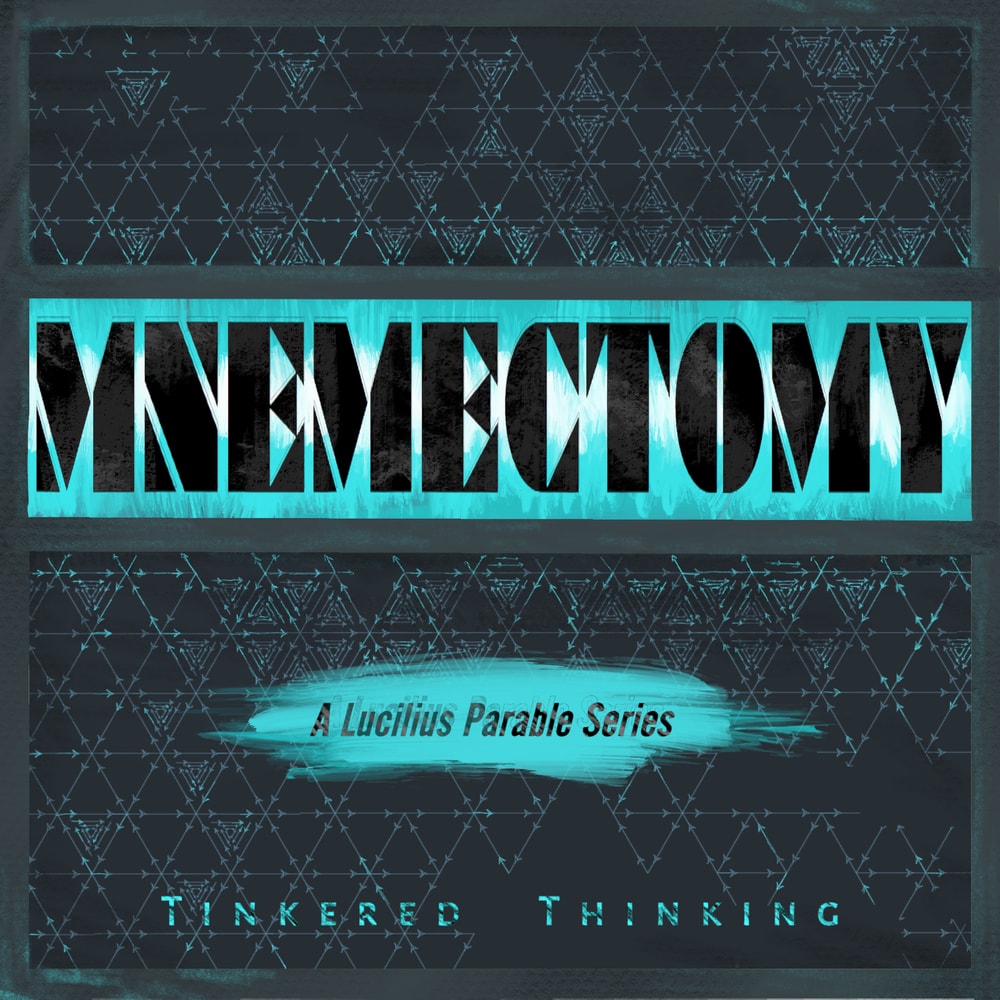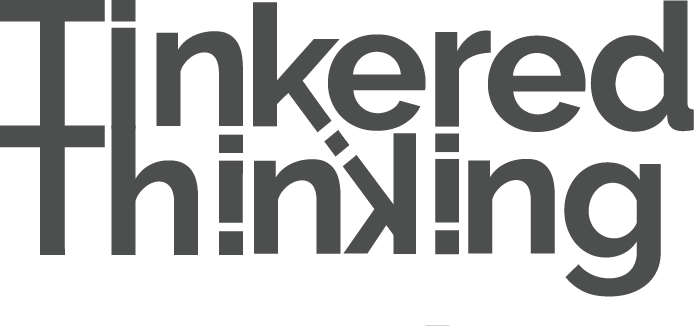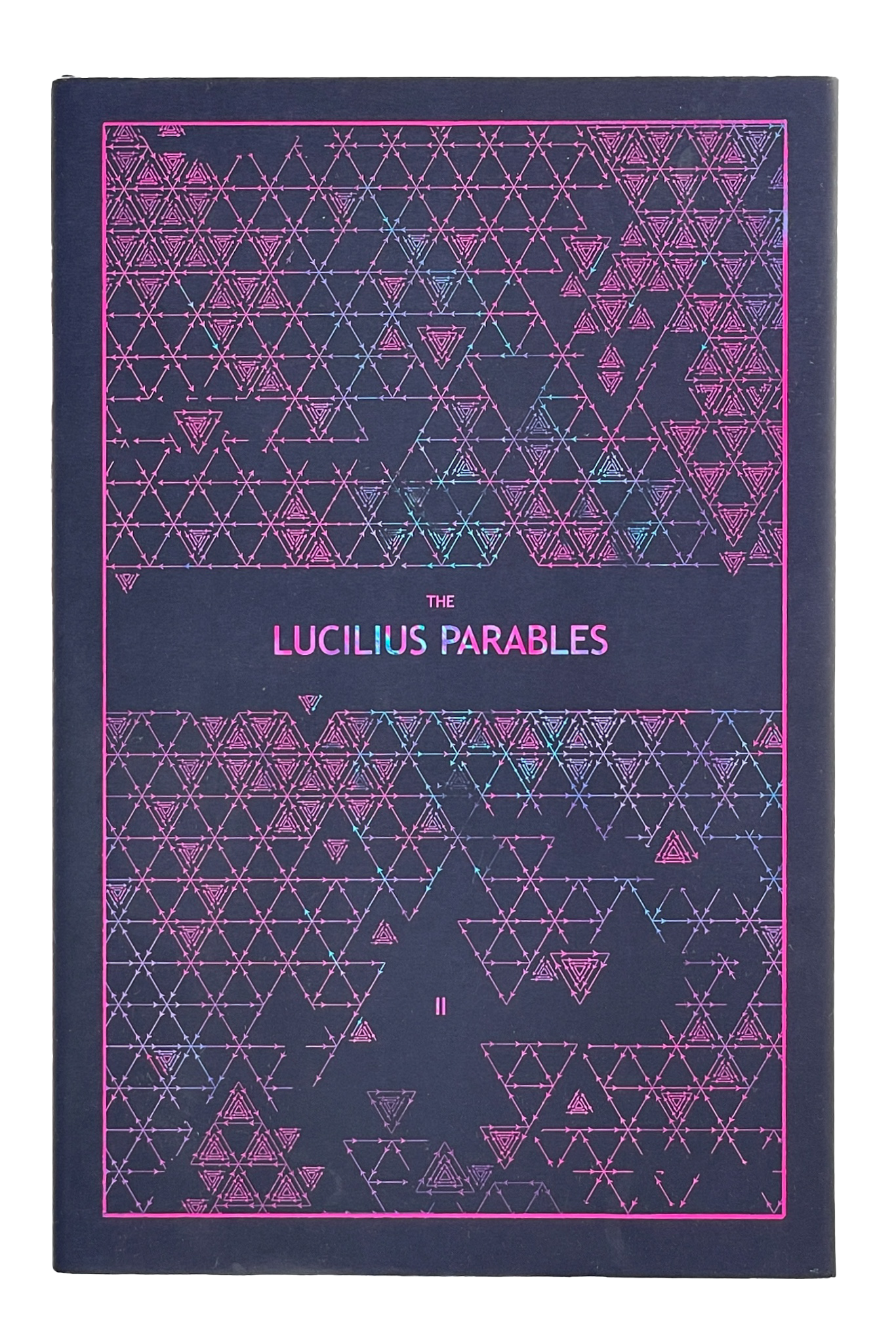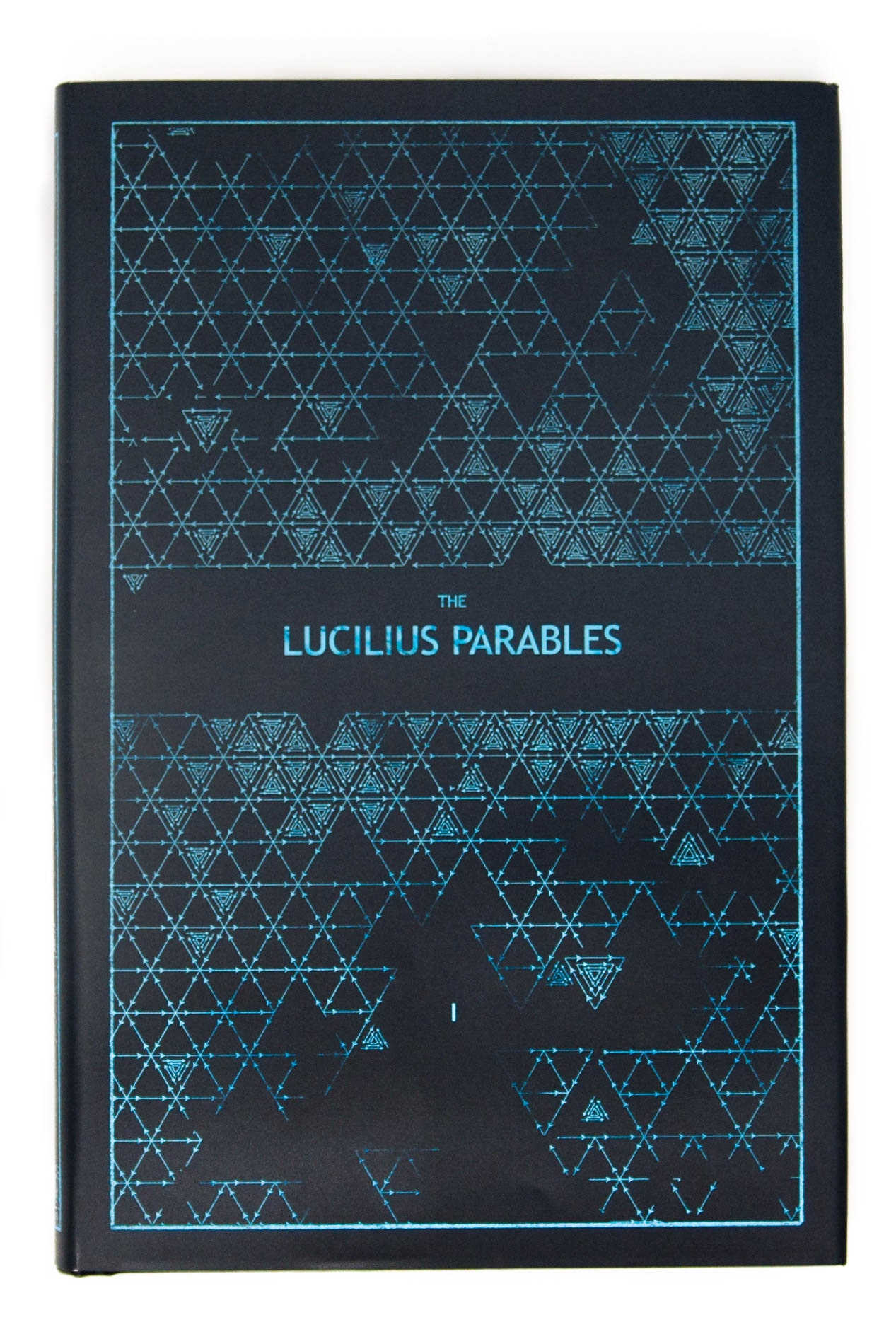Daily, snackable writings to spur changes in thinking.
Building a blueprint for a better brain by tinkering with the code.
subscribe
rss Feeds
SPIN CHESS
A Chess app from Tinkered Thinking featuring a variant of chess that bridges all skill levels!
REPAUSE
A meditation app is forthcoming. Stay Tuned.
RIVALNYMS: A CASE STUDY
October 25th, 2019
Episode 293 of Tinkered Thinking introduces the concept of Rivalnyms. In short, they are a class of word pairs that have characteristics which locate them in a strange and competitive space between synonyms and antonyms.
One of the most approachable examples is Determined/Stubborn. In the context of Rivalnyms, each word competes for the way we view a person’s efforts. If we approve of their goal, we describe the person as determined in their efforts. If, however, we do not approve of their goal, it’s not a stretch to say that person is stubborn. Each word may encompass a meaning that expands beyond this limited treatment just as the meaning of synonymous words can mean more than they do in the context of being synonymous. As a pair, both stubborn and determined perform well as rivalnyms. In short, both words are rivals for the way we name a situation. The way we settle this rivalry in real-time as we use language ultimately says everything about the speaker.
The concept of rivalnyms gives us a simple framework through which to analyze and ultimately question our own perspective.
This pair of words in particular highlights how the rivalnym concept works.
On the one hand we have
Cooperation,
and on the other hand we have. . .
Conspiracy.
Naturally, the negative and positive tension here is obvious. But on a practical level, these words mean very much the same thing. Both describe the action of a group of people working together to achieve a particular aim. This describes people who are conspiring and this describes people who are cooperating. The difference of course is that people who are conspiring must surely be doing something that is bad, and not in our best interest. Whereas those who cooperate are absolutely doing so for our benefit. Or so we think.
Conspire comes from Latin and means literally ‘breathe together’. Think of the word ‘respiration’. That root ‘spire’ means breath in both instances. The prefix ‘con’ is an assimilated form of ‘com’ which means ‘with’ or ‘together’. Think of the word ‘communal’. In an etymologically literal sense, conspire means ‘communal breathing’. which really takes the sting out of the word. Makes it sound far more…. meditative, passive and contemplative. Of course this carries none of the negativity that the word carries.
Cooperate is even more transparent. It means simply ‘operate together’. And it carries all the positivity that conspire lacks and makes up for in the opposite direction.
The strangeness of this separation between words becomes all the more apparent when we look at usage cases where they are substituted.
Instead of saying: Society is a large instance of cooperation among many individuals,
we could technically say that all of society is a conspiracy. Indeed, it’s true. We’re all conspiring together to create a better life, more or less.
Or we might think of our enemies cooperating behind our back. The positive connotation of the word cooperate puts a similarly strange note in the sentence.
These strange rivalnymic substitutions begin to highlight an important problem with all of language: there is no either/or. The truth of reality always lies somewhere between the two extremes that we often have on hand to express ourselves. Conspiring enemies do exhibit cooperation, and if we turn out to be the true villain in the history books, then those enemies weren’t conspiring at all, they were only cooperating. Think of the sinless ways the founding fathers are described in the United States. In the eyes of England these were conspiring rebels. And in the eyes of the slaves of the time, they were blatant hypocrites. But in the history books they are painted as a brilliant cooperation that triumphed in adverse circumstances.
The words we use have an intrinsic ability to describe not just what we are thinking, but how we are thinking. Rivalnyms are fairly straightforward advertisements for these mechanics.
What’s on offer to learn from rivalnyms is that there’s a space between rivalnyms that we can achieve.
That space is nuance. And it requires the patience and the thoughtfulness to build a larger context, one that fills in the space between cooperation and conspiracy, bridging the two instead of siloing these words in the minds of people who disagree.
THE FLEXIBILITY MACHINE
October 24th, 2019
Ever try to make a point and the response you get is
that’s a bit of a stretch…
No doubt we all have.
The comment simultaneously recognizes that we are trying to connect things that aren’t usually connected and points out that these things also have too much distance between them.
And yet this is exactly the reason for which we praise powerful imaginations. Great ideas often come from connecting things that no one had thought to connect before.
So where lies the difference between the work of a powerful imagination and another instance that’s less convincing, that turns out to be a bit of a stretch?
The value must come from the nature of the connection, and not the things we wish to connect.
It’s not what you do, it’s how you do it.
Is a ubiquitous prescription that comes to mind.
Presumably everything in the universe is connected to every other thing in some way. That’s the what, and that notion doesn’t really make much of a spark in the mind. It’s like saying ‘we breathe air.’
Yea, ok. So what?
The truly incredible thing to point out would be to describe how everything is connected to every other thing. This is the perennial goal of physcists. To uncover a T.O.E., or Theory of Everything.
A powerful imagination doesn’t see that two things are connected, it sees how those two things are connected. The manner of connection becomes the substance of persuasion when pointing out the connection to someone else.
When someone reacts by saying that the connection is a bit of a stretch,
it doesn’t mean that connection isn’t there,
what it most likely means is that we have not effectively communicated how these things are connected.
This is somewhat an entirely different problem. This is an issue of human communication.
We can approach the same exact situation from a different angle with a different context.
Ever listen to a teacher or friend give an explanation of something and it just doesn’t make sense? So they pull out a pad of paper, make a quick drawing and make the same explanation while pointing to different parts of the diagram and suddenly it all clicks?
The change in the medium of communication aids the communication. It’s not that the point they were trying to make was somehow flawed, it’s that they couldn’t communicate it very well through just words alone.
When someone reacts to your point by saying it’s a stretch, it may not be that you’re wrong. It may just be that you haven’t yet found the right words.
Again just with the particular connection you see, it’s not what you are trying to tell a person that makes a difference,
it’s how you do it.
In order to find a better way, the same imagination that had the flexibility to see a new connection needs to stretch again to see how our idea connects to the incredulous person before us.
THE DAILY GRIND
October 23rd, 2019
‘The daily grind’ in some sense seems to communicate something that is counter to human nature. A child certainly doesn’t think of playtime as a grind.
For most, the daily grind seems to be this unpleasant but necessary ordeal that we must put ourselves through in order to keep moving forward.
Though, if we examine the real verb here, grind, what happens in the literal sense? You sharpen a blade by grinding a dull edge down to a point, and then you continue the process of honing it down to a fine sharp edge with a finer form of grinding, with a smooth stone or a leather strap.
Similarly in the older gasoline cars, it’s possible to ‘grind gears’ by shifting the transmission improperly. The gears begin to loose their teeth and therefore their effectiveness and soon enough they are too smooth to work.
We must ask, in the daily grind, what is being ground down? The work? or the person?
If the daily grind is just grinding the person down, then we might think of that person loosing their bite, the same way a gear looses it’s teeth when it’s ground in a transmission.
It’s no surprise that so many view retirement as some kind of heaven, like a respite from the daily grind and unpleasantness.
And this is perhaps the fitting interpretation for most people in the machine. They are gears, and cogs that are slowly being used up, worn down and worn out until simply useless by exhaustion.
But there is another interpretation, and it might lend a hint of directional change for those who feel like a cog that’s being used up.
What does the daily grind mean if it’s the work that is being ground down?
Like a fine blade, the more we grind an edge, the smoother it becomes.
If you just keep grinding, then whatever it is you’re grinding will get smooth.
And then you’ll be gliding.
While the barrier to entry for much of the best work we can do is a grind in many ways: a grind against social pressures to be a cog, a grind against the loneliness that no one is noticing, a grind against the sense that such work is useless because it’s not bringing in much money, the farther we go, the smoother the path gets. Efforts compound and soon enough the work isn’t so much work as it is play.
And what is the difference really between work and play aside from the perspective we have for the given task?
The juxtaposition of the two different interpretations of the daily grind calls to mind an important question about the work you are doing:
Is it possible that the work you do will one day feel easy and fun and rewarding once you’ve grinded it down enough?
Or is it just grinding you down?
THE SMITH & THE DEVIL
October 22nd, 2019
By the word of some researchers, this may be the oldest story we know of, coming to us from the Bronze age,
6,000 years ago.
Despite it’s age, this story has never been more relevant than it is today, and it will be increasingly relevant as we move forward.
The story goes like this:
A blacksmith makes a deal with the devil. The deal is the blacksmith sells his soul in order to gain the ability to weld anything together. Once the blacksmith has this power, he then welds the devil himself to an immovable object, like a rock. Some versions report a tree. Rock sounds better. No matter what it is, the point is. . .
the blacksmith actually gets away with it.
He gets the power without having to hand over his soul.
This story is the original technological hack.
It is the original story of being able to eat your cake and keep it too.
And even if this isn’t actually the oldest story we have on record, the fact that it’s one of the very oldest isn’t just prescient and astonishing, it’s. . . hopeful.
In this little story, the blacksmith changes the rules of how things operate. The traditional rules are: you give something, you get something. But the blacksmith uses the situation to change the situation. He gets something for nothing . . . but it still requires one important ingredient.
What’s required to get something for free is ingenuity. He played by the rules of the situation, but there was a flaw in those rules, a loophole that the blacksmith saw and used.
One might say that the blacksmith didn’t play by the rules, but it’s far more accurate to say that the rules were not properly designed to account for all situations. In effect, the rules were not designed to deal with human ingenuity.
It’s appropriate that this story arose in the bronze age when humans began to discover the possibilities of smelting different metals. But it’s even more appropriate today, when it’s possible to make billions of dollars if you can touch a computer in just the right ways.
Our species seems principally defined by our ability to sneak treasures out of a lockbox that the Unknown keeps hidden away.
Anyone who reads or listens to this episode of Tinkered Thinking can only do so because of dozens and dozens of technological discoveries that have been laced together in an intricate way that compounds the beneficial effects of all those discoveries. And if say, you’re connected to a public wifi, then you’re doing so pretty much for free. It’s as though you and I both conspired against the devil to get some thoughts that are in my head into your head without having to give much of anything away. All it took was some ingenuity.
The story, as an analogy certainly seems even more ripe when you think of the recent scrutinies big tech has endured. In some cases it certainly looks like someone sold their soul for power. Regardless, that is a somewhat different topic.
At the heart of the Smith and the Devil is the notion that you can invent your way out of a situation.
That underlying principle is the reason we like James Bond movies, Mcgyver, and Jason Borne, along with the Indiana Jones series and The Da Vinci Code.
Fewer things are more satisfying than when a puzzle is defeated by human ingenuity.
In the broadest sense, it’s this that we seem to be naturally geared towards.
We seem to forget that our species is the product of natural processes. The difficult word in these last two sentences is the word ‘natural’. Plastic litter certainly doesn’t feel natural, but if we recognize humans as a natural process of environmental conditions. . . than it is.
Our drive as a species appears more and more like an unstoppable colonization of the unknown. No matter what the rules seem to be, we intuit the possibility of a deeper set of rules that allows us to act in a way that hacks the situation, and by this process we slowly tame chaos and uncover the unknown. And in the process we uncover treasures afforded by understanding these new secrets.
This applies on the level of our society and planet, but more importantly it applies to the individual.
With the internet, nearly anyone has access to the tools needed to teach themselves virtually anything. And with that, you can innovate your way out of your current situation and quite literally create a better situation.
fact is,
Everyone is a smith.
And we all have the opportunity to trick the devil
and make a better life.
The first trick is to realize that your life, your current situation, is a puzzle.
Are you working to solve it?
or are you doing laps in the maze?
A THOUGHT EXPERIMENT: CUTTING QUESTIONS
October 21st, 2019
Imagine this:
You have two thick pieces of identical card paper, and they are glued together, but between the two is another thin sheet of blue paper. But within the borders of this blue sheet of paper is a white design. The color is not just on the surface but goes all the way through to the back, so if you were to tear it in half and look at the torn edge, you would see that some of it is blue and some of it is white. It’s a sort of mixed material paper, but it’s perfectly flat, and the edge between the two colors has no noticeable change other than color. There’s no small divide or ridge, it is perfectly smooth.
Now the white design on the blue page is very very important, and your goal is to figure out what that shape is. However, as mentioned, it is glued between two thick pieces of card paper.
You are tasked with figuring out what the design is, and all you are given is a pair of scissors.
Imagine how this tedious process would go:
You have to cut into the sandwiched paper and then look at the edge of the cut you’ve made, inspecting it for any white in the layer of blue.
Slowly you cut farther into the paper until you hit some white, and then you know you’ve gone too far, so you change directions slightly and test with a small cut. All blue. So you cut some more until you find white.
Slowly, by prodding into the area of white you would eventually find the border… if you are careful and diligent.
This thought experiment is an analogy for the way we build and discover novel things. Whether that be learning something knew like how to install a perfectly aligned drawer or whether that be finding a profitable idea for a business. With each, while learning or figuring out, we ask ourselves questions that propel us forward. This can be as simple as what should I do next? and from there it can get as specific and detailed as necessary. What if I do this? Maybe that would be better?
Each question that we ask is like a single cut with the scissors. The question we ask inspires some course of action to investigate and ideally we come up with some kind of result. And that result is like inspecting the layer of blue that we’ve cut into. Sometimes there doesn’t seem to be any result, and all we see is blue. But when we hit upon something, there’s a noticeable change. We see some white. And we want to follow that color to see what else is there, because this mysterious character or shape or rune is the key to increased agency.
Every time we learn something or build something that makes an impact, we are invariably more capable than we were before the effort. And it’s through this iterative process of action and result, and making sensible course corrections depending on the results we find.
It’s tedious, but it works.
The astute thinker will be wondering about shapes and characters and designs that have some kind of internal negative space. Think about the difference between the letter ‘T’ and the letter ‘B’ You can trace a ‘T’ without ever picking up your pen. But in order to trace out a ‘B’ you need to lift your pen in order to make the two spaces inside of the ‘B’.
So what does this mean with regards to the thought experiment?
Well it’s certainly important to find the outer limits of the shape, that thing we are building, or the skill we are learning.
But we need not fear cutting straight into the thing we seek. Who knows what details lie within that require our attention.
-compressed.jpg)





